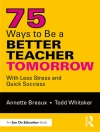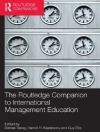How do schools protect young people and call on the youngest citizens to respond to violent conflict and division operating outside, and sometimes within, school walls? What kinds of curricular representations of conflict contribute to the construction of national identity, and what kinds of encounters challenge presumed boundaries between us and them? Through contemporary and historical case studies—drawn from Cambodia, Egypt, Northern Ireland, Peru, and Rwanda, among others—this collection explores how societies experiencing armed conflict and its aftermath imagine education as a space for forging collective identity, peace and stability, and national citizenship. In some contexts, the erasure of conflict and the homogenization of difference are central to shaping national identities and attitudes. In other cases, collective memory of conflict functions as a central organizing frame through which citizenship and national identity are (re)constructed, with embedded messages about whobelongs and how social belonging is achieved. The essays in this volume illuminate varied and complex inter-relationships between education, conflict, and national identity, while accounting for ways in which policymakers, teachers, youth, and community members replicate, resist, and transform conflict through everyday interactions in educational spaces.
Spis treści
Foreword to the Series: (Re)Constructing Memory: School Textbooks, Identity, and the Pedagogies and Politics of Imagining Community.- Acknowledgments.- Introduction.- Section 1: Nation-Building Projects in the Aftermath of Intimate Conflict.- What Framing Analysis Can Teach Us about History Textbooks, Peace, and Conflict: The Case of Rwanda.- Ideologies Inside Textbooks: Vietnamization and Re-Khmerization of Political Education in Cambodia during the 1980s.- Construction(s) of the Nation in Egyptian Textbooks: Towards an Understanding of Societal Conflict.- Section 2: Colonialism, Imperialism, and Their Enduring Conflict Legacies.- Creating a Nation without a Past: Secondary-School Curricula and the Teachingof National History in Uganda.- From “Civilizing Force” to “Source of Backwardness”: Spanish Colonialism in Latin American School Textbooks.- The Crusades in English History Textbooks 1799–2002: Some Criteria for Textbook Improvement and Representations of Conflict.- History Education, Domestic Narratives, and China’s International Behavior.- Section 3: Interaction and Integration in Divided Societies.- Addressing Conflict and Tolerance through the Curriculum.- Learning to Think Historically through a Conflict-Based Biethnic Collaborative Learning Environment.- Section 4: The Democratic Role of Schools as Mediating Institutions in Society.- Living with Ghosts, Living Otherwise: Pedagogies of Haunting in Post-Genocide Cambodia.- When War Enters the Classroom: An Ethnographic Study of Social Relationships Among School Community Members on the Colombian–Ecuadorian Border.- From Truth to Textbook: The Peruvian Truth and Reconciliation Commission, Educational Resources, and the Challenges of Teaching about Recent Conflict.- Nation, Supranational Communities, and the Globe: Unifying and Dividing Concepts of Collective Identities in History Textbooks.- Index.












